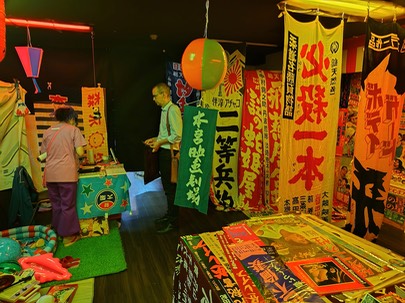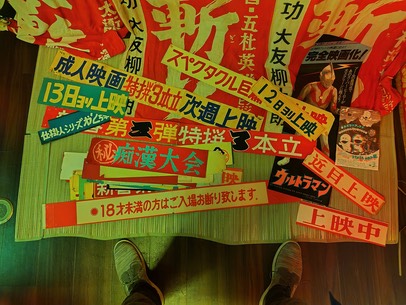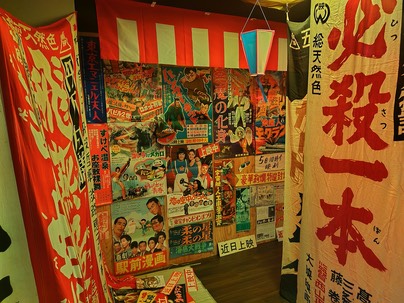One movie theater I want to go to, but have not yet visited, is the Motomiya Movie Theater in Motomiya, Fukushima. Built in 1914, it was originally created as a space for stage plays and public meetings, but was then transformed into a movie theater during the war. Before closing in 1963, it showed a wide variety of movies, many of the B-movie—or lower level—variety. What is fascinating is that the building has not been torn down and is actually still maintained as a movie theater, occasionally showing films and doing special events. It is also supposedly the only theater left in Japan that shows films with a carbon arc 35mm projector. Especially with a very active social media presence (see their Facebook page), the Motomiya Movie Theater still garners a lot of attention, being the subject of documentaries, news reports, and even a book: Basue no shinema paradaisu. It suffered storm damage a couple of years ago, but successfully sold T-shirts to help with repairs (I bought one, of course).
While I haven’t visited the theater, I did visit one of their small poster exhibitions that they’ve held occasionally in Tokyo. In July, they did a “Poster Champion Festival” on the second floor of At Wonder in Jinbocho, a used bookstore that is quite good for film-related materials (we include it in the Research Guide to Japanese Film Studies). They divided the rather long rectangular room with a large curtain to create two separate spaces. Once you passed through the curtain, it was like entering another world.

The space was practically covered from ceiling to floor with posters, banners, and signs of various sizes, all of different colors and fonts.

Most were from obscure B-movies, pink films, ghost and horror films, and other exploitation genres.

While the number of posters and banners was clearly in excess, the atmosphere, especially the garish colors and the bawdy ad lines and visual design, was actually indicative of a real segment of Japanese film history. As I mention in Visions of Japanese Modernity, theater districts like Asakusa in the 1910s could almost seem like avenues enclosed by tall walls full of banners and gaudy hand-painted marquees. Film reformers often complained not just about the Japanese films made at the time, but also the vulgar physicality of such entertainment streets, which assaulted the senses even before one entered the theater. Efforts to make cinema safe for the middle class, especially through locales like the prewar Ginza and Yurakucho, swept such lurid advertising to the side, but it continued to exist in marginal spaces like rural Fukushima.
The Poster Champion Festival was not just an exhibit: they were selling old posters and T-shirts and other goods. I got one poster for a director friend of mine and yet another Motomiya Movie Theater T-shirt. It was also a pleasure talking to Tamura Yoko, the daughter of the Motomiya Theater owner who was running the exhibit. If you look at their Facebook page and go back to July, you will find a photo of me with Harvard's Alex Zahlten, who ventured into this other world with me.
Here’s a YouTube video introducing the Motomiya Movie Theater and its projector:

